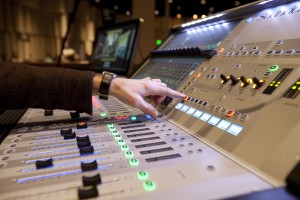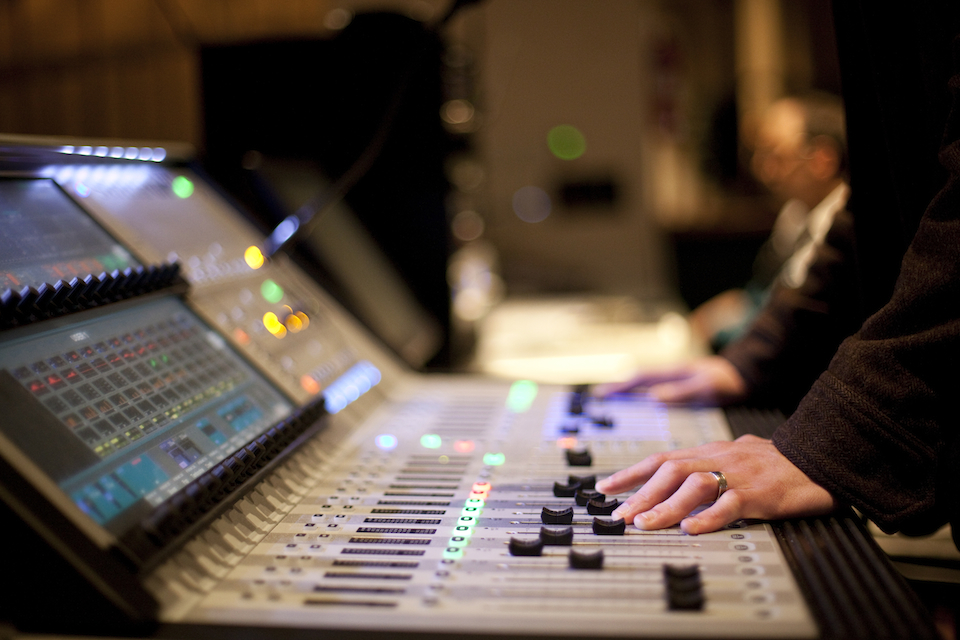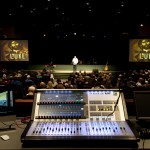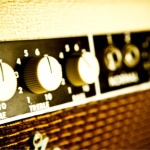When Musicians Mix
How to create the right conditions for success and train your musicians to mix sound.
 The time is right to train your community’s musicians and artists to mix sound. Over the past 50 years technical systems within most churches have increased in complexity to meet the ever changing demands of modern ministry. This lead to the introduction of a new role within the Church: the audio technician, the working professional with the appropriate technical background to make it all work together in harmony.
The time is right to train your community’s musicians and artists to mix sound. Over the past 50 years technical systems within most churches have increased in complexity to meet the ever changing demands of modern ministry. This lead to the introduction of a new role within the Church: the audio technician, the working professional with the appropriate technical background to make it all work together in harmony.
However times are changing. With the advent of digital audio workstations, music producers have taken on more and more of the engineering responsibility as the tools they use have evolved to better support their creative workflow. Now that many churches have transitioned their mixing systems to digital, technical directors have a unique opportunity to create the conditions your musical community needs to participate in mixing sound.
What follows is a 10 point plan designed to create the conditions for success and train your musicians to mix sound:
1. Pre-qualify – There are folks who are going to take to mixing sound and some that won’t. Start by looking for empathy, a servant’s heart, emotional maturity, tech savvy-ness and experience with modern music production tools (DAWs). Then test them: Pull together a great mix, then put them behind the board for a rehearsal or service. Coach them through it, but be listening to see if they have sufficiently developed “ears” for the job. Empathy, service, music production experience, ears.
2. Resist the urge to train your artists to be technicians – Focus the scope of their training and involvement to the essentials: mic’ing up instruments, following the procedure to setup & sound check, and mixing sound. There is no need to start them with a Physics of Sound course. Teach them the ART of sound. You are the TD, the master of the technical domain. And while undoubtedly they will need you to bail them out when they hit a snag, what YOU need is a break. Train them to do a specialized job, not your job. Then…
3. Stack the deck in their favor – You are going to have to create the conditions for your artists to succeed. They will not be able to solve the myriad of technical challenges you’ve faced in your career, however if you prepare, and update your system to be setup as a matter of procedure, then you too can make this work. It’s all about preparing a system to be setup in a repeatable, predictable fashion. Develop stage plots for each of the bands. Pre-wire sub-snakes that always show up in the same places on the console. Label, label, label and develop an assembly instructions and tools that make the whole process repeatable. Take photos of what it looks like when it is correctly connected, when mics are positioned and monitors are correctly set and create an assembly instruction photo book.
4. Reduce the technical stuff down to a clear procedure – For example: start with mic’ing instruments, then line checking, phantom power, ground lifts & setting the HPF, setting monitors, adjusting signal processing, eq’ing, and building a mix. In the same way you’d prioritize a mix, prioritize your instruction to the channels that matter most: vocals, kick, snare and guitars. The order of items in a procedure is really important but may be different for each configuration. You know that you don’t want to set monitor levels then adjust mic trims – they might not – so teach them the importance of honoring the order of your procedure. Pre-dial in whatever you can, and should you have one, setup a scene in your digital console that gets them off to a great start.
5. Triage & priorities –Setup a mix priority to keep them focused on the mix and off continual eq’ing…Vocals on top, harmonies balanced and tucked under the lead vocal, kick, snare and bass driving the song, lead lines pushed at the appropriate times, rhythm guitars and keys supporting the whole endeavor, then subtle effects to give it depth. Teach them that they can to do 80% of the job simply by adjusting levels. Then take them deeper into eq and dynamics. Raise the bar for them with each interaction.
6. Going a littler deeper – If your console has a sweep-able HPF start there. Teach them to use the HPF judiciously to clean up the bottom end of their mix. Then show them how moving the mic can often be more effective at tone shaping an instrument than eq. Teach them to visualize the frequency spectrum by breaking it down into big chucks. Help them to think about what instruments that need to be present or dominant in each band. Keep dynamics really simple. Dial in some compressors for your vocal, acoustic and bass channels then train them to adjust the threshold for the right amount of compression.
7. The same things that make for a great arrangement make for a great mix –
Here’s some advice I have offered to artists: “The rhythm section is the foundation, so build that first, then bring in the lead vocal and surround it with the guitars and keys. Contrast will help the listener focus on the melody. Keep the mix uncluttered, and celebrate the negative space in the mix. Know the song, know who is going to take the lead, and be prepared to push the appropriate lead instrument between vocal sections. Ride the vocal and the harmony background vocals. Make sure you’ve got notes from your worship leader on who’s taking the melody in each song.”
8. Coach them – Break the whole operation down into separate jobs: setup, mic’ing instruments, house mix, monitors, etc. Focus each individual on one job at a time. Coach them until they’ve mastered that position. Then move them on to the next. They won’t need to have the technical breadth of knowledge you have, so help them surpass your abilities in the artistic area in which you focus them.
9. Practice and self-evaluation. Setup a recording rig so they can multi-track or capture the stereo pair for each rehearsal or service. Teach them to assess their mixes and learn from their successes and mistakes. Go back to the multi-tracks and re-mix for success. This is a great way to facilitate putting your worship leader in the audience so they have the opportunity to provide feedback first hand.
10. Become a consultant – Imagine a future where your artistic crew is getting the work done and calling you from time to time for advice or to solve a technical issue that came up. Identify the technical and procedural gaps that stand between that future and where your facility is at today. Then go to work on making it real.
So that’s it. Armed with a clear sense of priorities, a handful of procedures, and some basic techniques, you can empower your artist community to mix sound and build out your technical ministry.



